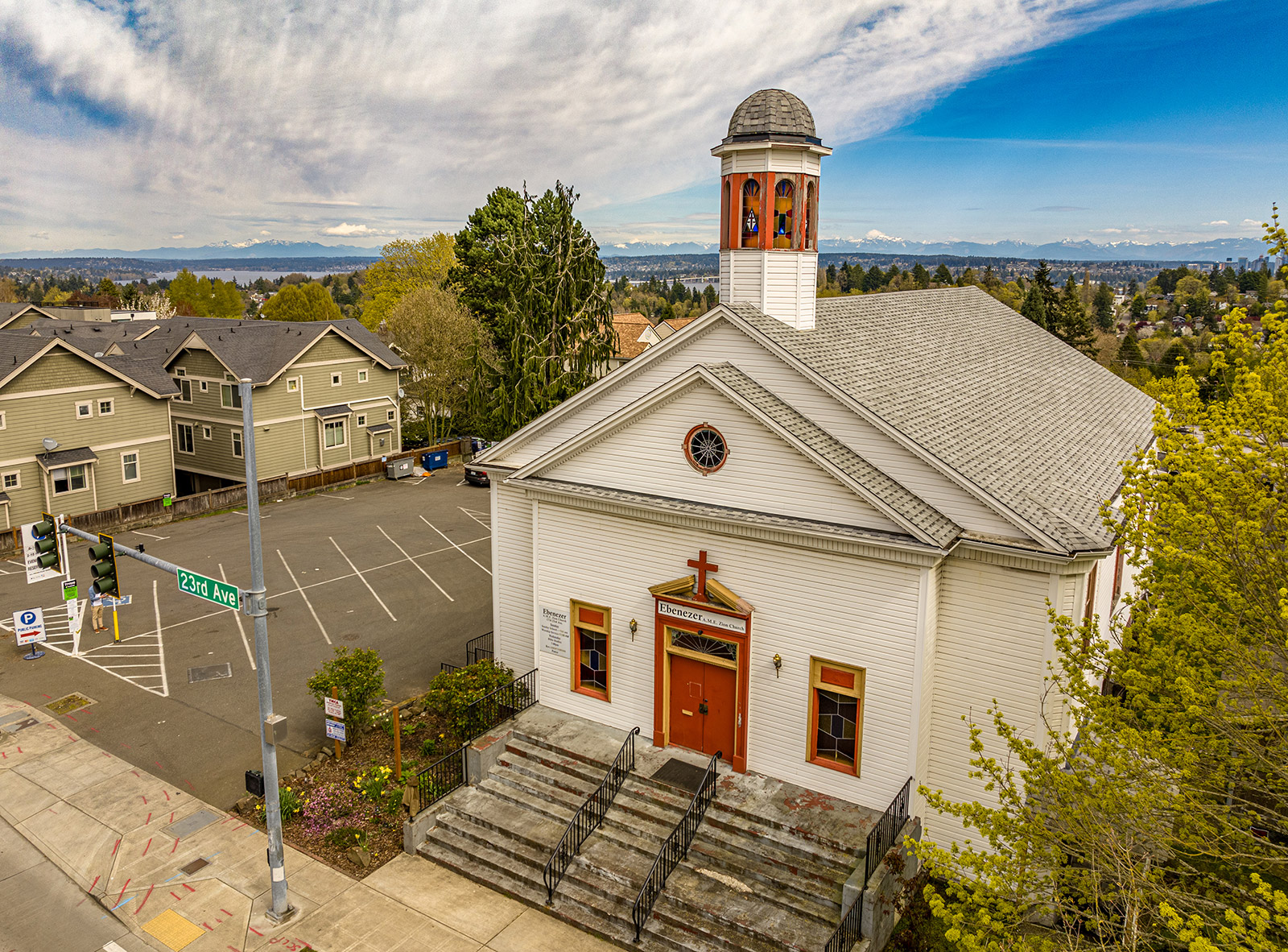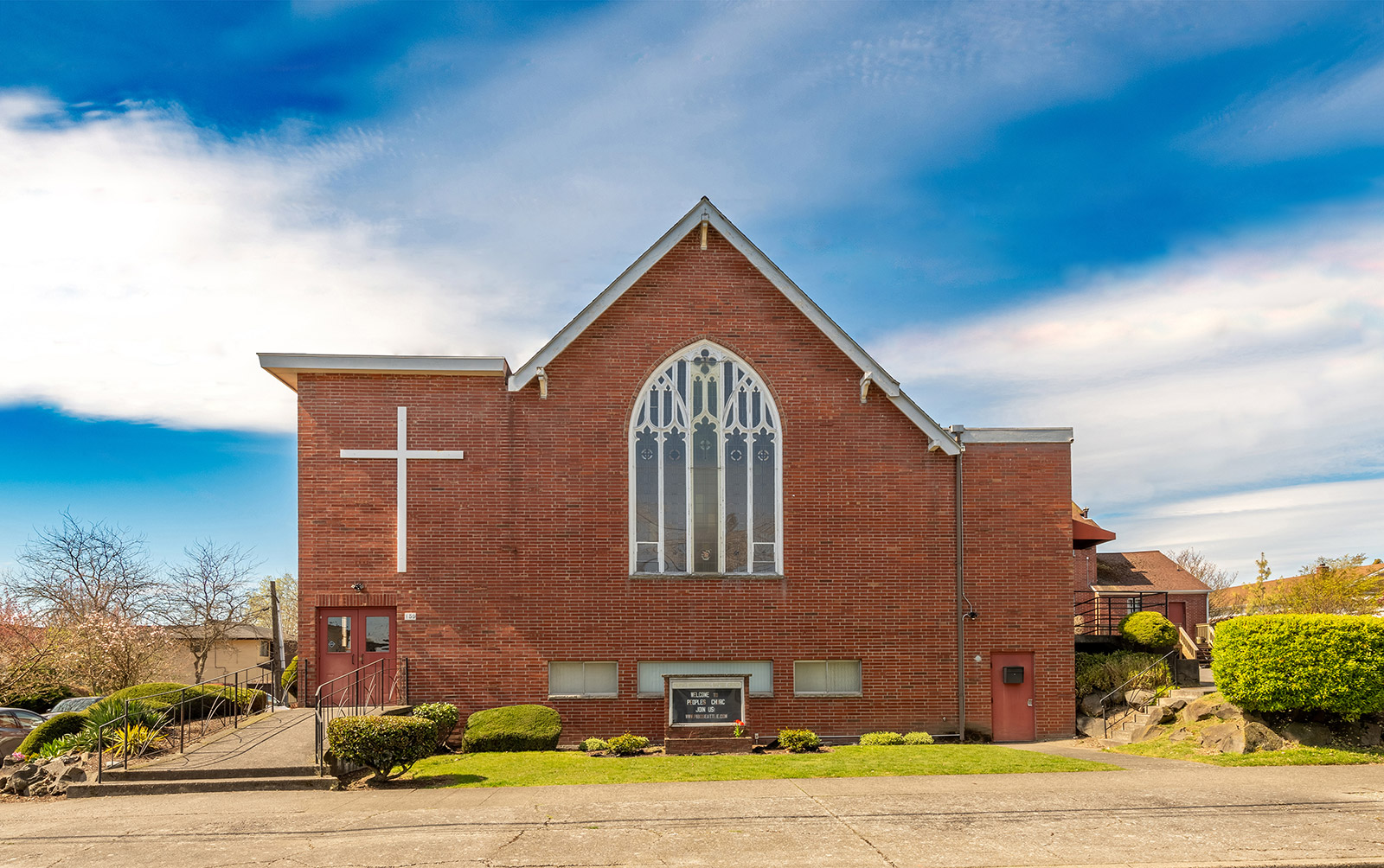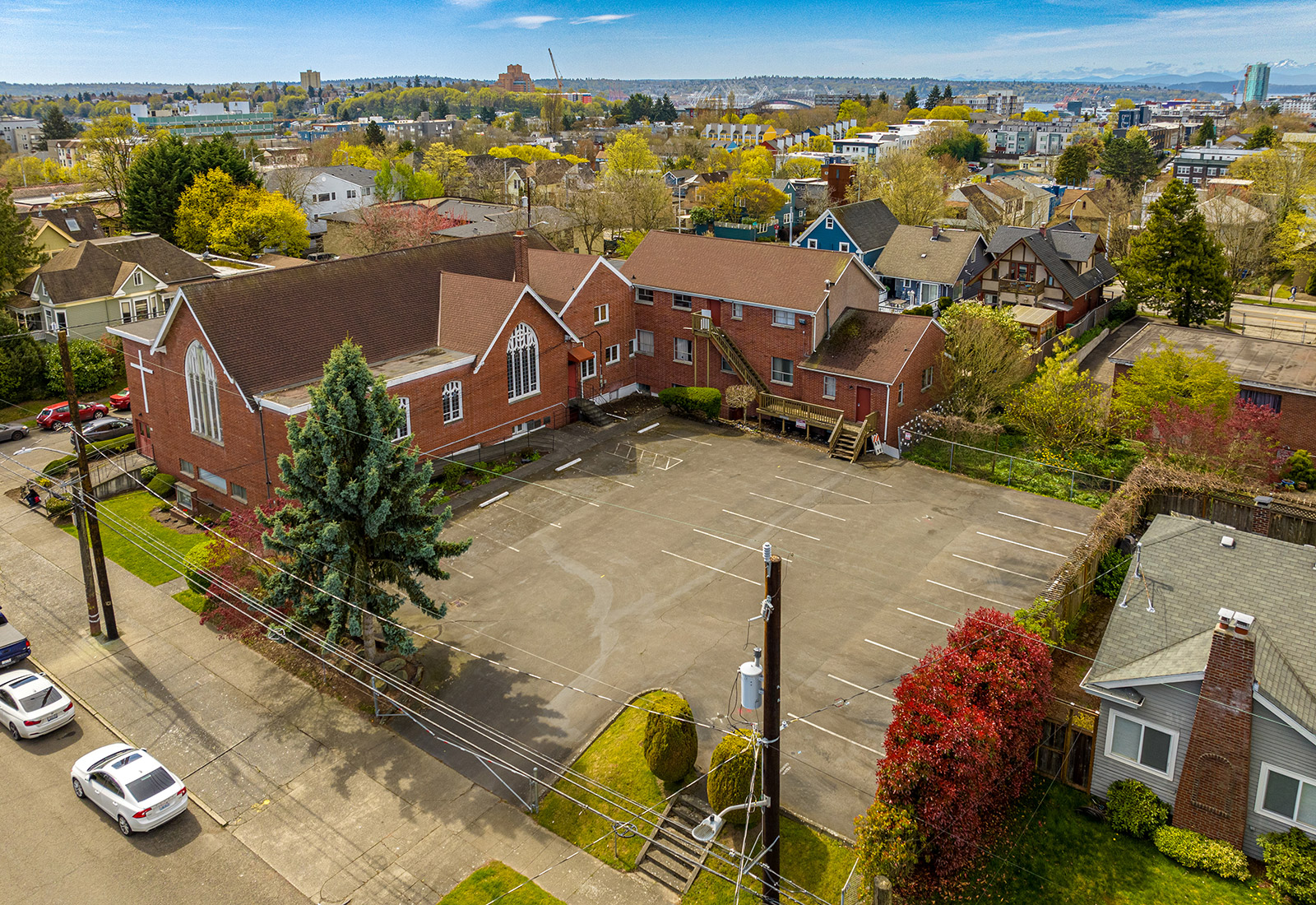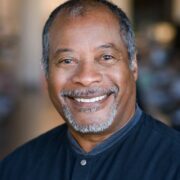
[Ebenezer AME Zion Church in Seattle, photo by BUILD LLC]
Early this spring, we sat down with Seattle architect, urban planner and University of Washington professor Donald King to discuss his Nehemiah Initiative, community-driven design, gentrification, and the importance of the Black church. We hope you enjoy this topical and thought provoking conversation as much as we did.
As President and CEO of Seattle’s Nehemiah Initiative, tell me about how the organization came about.
It started in this building, the Goodwill Missionary Baptist Church in Seattle’s Central District (CD). A conversation began at the end of 2017 after a builder/ developer, Aaron Fairchild, and Bishop Tyson, a senior pastor of the church, had agreed that the church should develop its property rather than selling to a gentrifier. Bishop knew the power of land and wanted to hold onto it even though the church was cash poor at the time.
Subsequently, the Bishop and Fairchild had a long conversation about what the Bishop called “race, religion, and real estate,” and during the course of their ongoing conversations, Fairchild asked the Bishop if he knew me, which he did not, so he made an introduction. The three of us then started meeting on a weekly basis, and the discussion moved beyond Goodwill to other church-owned properties that their owners may be interested in developing. I was interested in doing pro bono work for these entities, as pre-development work is very speculative, very risky, and very expensive, particularly for a church. I wanted to help, but I also needed resources.
In early 2019 the University of Washington College of Built Environments hired a new Dean, Renee Cheng, and as I was a part-time affiliate faculty, teaching community-based design studios at the time, I approached Cheng about creating an interdisciplinary design studio that leveraged all of the college’s offerings — landscape, architecture, urban design and planning, real estate, construction management — all in the service of doing feasibility studies for the various church dream projects. We were able to realize this thanks to support from the McKinley family, and the studio was so successful that it inspired several other spinoff studios that addressed the 2020 racial awakening.
In addition to the various programs and project parameters, students were given a history of the Black church, of the CD, and the gentrification and displacement it had experienced. From there, students from each discipline did their own research on the neighborhood and requisite entitlements. After the vision for a given project was in place, the real estate students came in and did a financial analysis and developed a proforma; parallel to this, I was fundraising for all of it, including predevelopment services so the churches didn’t have to tap into their equity or get into a compromising situation with a developer.
The term gentrification has changed in the last several years—what does it mean in this application?
Gentrification in the CD is manifest in the makeup of the people who live there. Those who newly moved in have more money, more education, and more political influence; and perhaps most importantly, they sought an affordable property and they had the resources to buy one. Historically, there was a preponderance of African Americans in the CD, but not entirely—70-75%. Then it changed rapidly for several reasons: growth management worked in concert with the Seattle comprehensive plan to densify the city; up zoning; and a desire to provide more amenities in key areas. The CD was ripe for all of this, and it was the closest neighborhood to downtown that met the criteria. But those of us who were involved at the time did not see what was coming. Later, now, we’re in a position of trying to course correct

[Peoples Institutional BC Church in Seattle, photo by BUILD LLC]
Can you speak to the many other characteristics that the church holds for the community?
First, you must understand the importance of the Praise House, which was the first place where enslaved Africans were introduced to Christianity; religious-minded enslavers felt that this needed to happen because they considered Africans savages, so they gave them the Praise House where they were able to assemble, for the first time, and to worship. So they started talking to each other—sharing stories about their experiences at the various plantations etc. So the Praise House became a place to plot and plan, and to learn about abolitionist and everything that they weren’t able to share otherwise due to safety concerns. It was the first place that was organized by Black people—this church was their place, as it would be for well over a century and counting. The idea of the gospel of liberation has been embedded in the American Black church ever since. The church is the Black community’s moral compass; it’s a community asset; a place of gathering; a place of political influence; and a place for leadership development. Our civil rights leaders were all of the Black church. Unfortunately, gentrification has caused many longtime residents to scatter, which among other things resulted in a loss of this kind of community. To learn more, Henry Louis Gates Jr. wrote a book called The Black Church, This is Our Story, This is Our Song, which was developed into a terrific series for PBS.
Was there a tipping point for you personally that prompted you to take action?
I was working on a masterplan for Mt. Zion Church in 2004/’05, and the pastor was debating whether to move the church. The First African Methodist Episcopal Church (FAME), the oldest Black church in the state, had also had this debate; the congregation was divided, and half of them left to start a new church outside of Seattle, and the other half remained. It was around this time that I thought that something had to stop the displacement; the abandonment of the center of who we were to move to the suburbs to pursue the so-called dream.

[First African Methodist Episcopal Church, photo by BUILD LLC]
What are the threats to the African American community that you are most concerned with currently?
Displacement and erasure of Black economic power and political influence. The breaking up of the Black community. There’s an affinity of culture when people collectively go to church and show up for celebrations like Juneteenth, but because people are being forced out due to gentrification, or are choosing to leave, the community is dissolving. It’s a community that had made urban centers their home for over a hundred years; since the great migration, urban centers were mostly Black in much of the country; urban and Black were synonymous.
Have you visited any cities that you feel have struck an equitable balance of diversity—where different communities have managed to retain their culture?
I don’t really have any great examples. Detroit’s city planner said that it would take decades for the city to be threatened by gentrification such that they would lose the Black majority, however, they have experienced gentrification and some of the most desirable areas are now mostly white. Los Angeles’ Leimert Park was a primarily Black neighborhood, but it is now gentrifying — changing its complexion and status — and housing prices are through the roof; people are selling and moving to as far afield as San Bernardino. Other cities like Harlem, Brooklyn and D.C. view Seattle as a canary in a coal mine, so they’re enacting programs to safeguard their communities.

[Peoples Institutional BC Church in Seattle, photo by BUILD LLC]
Regarding Council Bill 120081, the original ordinance of which stated:
“To fulfill State requirements, address displacement, and support community resilience, OPCD is proposing a suite of Land Use Code changes that would provide a development bonus for the construction of affordable housing on property owned or controlled by a religious organization. …all housing developed under the proposed provisions must be affordable to households with incomes under 80 percent of area median income (AMI) for 50 years.”
Can you speak to the controversy around this?
We call it the ROOP: the Religious Organization-Owned Property ordinance. We were involved with this at the state level, and then when it came to Seattle, the Nehemiah studio provided some research and helped craft the ordinance. We pushed for 80% AMI, but the day of the vote there was a last minute amendment that called for 60%, which is how it passed. I wasn’t happy about this. I called on my network, developed a letter campaign, and within two months it was reversed to the original 80%. The Council felt that we were turning our backs on low-income housing; 60% was still there, and the majority of the funding still went to 60% and lower, but no one was considering the middle: our teachers, fire fighters, nurses who can’t afford to live in Seattle. At the same time, we were developing a home ownership program (our first four projects) and we needed flexibility: slightly more than 60%, and slightly less than 80%—the sweet spot range between 60-80% where people are income-restricted, but also need to earn enough to qualify for a mortgage. Our naysayers were more concerned about serving the lower income and excluded the middle. Our goal was to serve both.

[Peoples Institutional BC Church in Seattle, photo by BUILD LLC]
What is Nehemiah Initiative’s dream scenario for a development project?
Something like the 38-unit project we’re working on now for Goodwill Missionary Baptist Church. A lot of people feel that buying a home means purchasing a single-family residence, but this is no longer an option in the Central District. Instead, the viable opportunity is an affordable condominium, which offers some equity growth, but it’s capped. Some people argue that this slow wealth growth is perpetuating the equity gap between BIPOC and White communities. I would like for it to be otherwise, but if we don’t keep it this way, the first family that buys in will be the last.
Can you recommend a book or two that every architect, developer, and property investor in the Pacific Northwest should read?
We Aren’t Broke, Uncovering Hidden Resources for Mission and Ministry by Mark Elsdon
The Black Church, This is Our Story, This is Our Song, by Henry Louis Gates Jr.
 Donald King is a founding member of the Nehemiah Initiative. He is an architect, planner and educator with over 50 years of professional experience in the planning and design of community projects. Donald King has a Master of Architecture degree from UCLA and is licensed to practice architecture in California, Hawaii and Washington. He has been a member of the College of Fellows of the American Institute of Architects since 2000 and is currently an Affiliate Professor of Architecture in the College of Built Environments at the University of Washington.
Donald King is a founding member of the Nehemiah Initiative. He is an architect, planner and educator with over 50 years of professional experience in the planning and design of community projects. Donald King has a Master of Architecture degree from UCLA and is licensed to practice architecture in California, Hawaii and Washington. He has been a member of the College of Fellows of the American Institute of Architects since 2000 and is currently an Affiliate Professor of Architecture in the College of Built Environments at the University of Washington.





